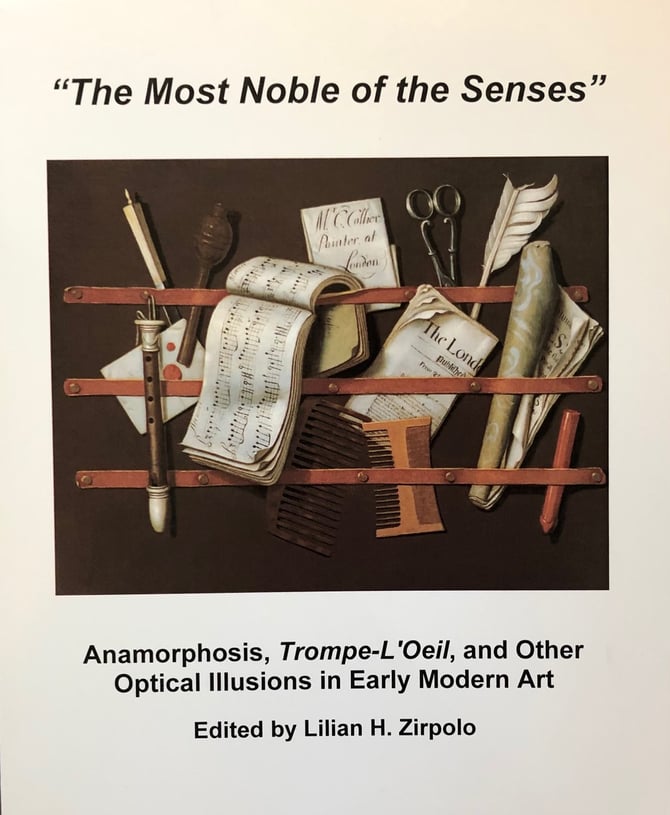
The Most Noble of the Senses: Anamorphosis, Trompe-L'Oeil and Other Optical Illusions in Early Modern Art
The title of the present anthology refers to the Western tradition of placing sight at the apex of the hierarchy of the senses. Among art historians, the granting of supremacy to sight usually calls to mind Leonardo da Vinci’s paragone of painting and poetry in the Codex Vaticanus Urbinas Latinus 1270. The concept however had existed long before the Renaissance master had penned his renowned paragraph in which he extoled the eyes as the windows to the soul. Centuries earlier, Plato and Aristotle had already privileged sight and granted it cognitive value, explaining that it led to human “understanding of the nature of the universe.” Saints Augustine, Bernard of Clairveaux, and Hildegard of Bingen, and the encyclopedist Isidore of Seville also categorized sight as the highest among the senses. The present anthology deals with the subject of the tricking of the eye by means of perspectival distortions, mirrored devices, the illusionary interplay between the real and the fictive, and other visual and mechanical techniques conceived in the Early Modern era. The essays included deal with three distinctive themes related to optics and art: anamorphosis, trompe l’oeil, and quadratura.

